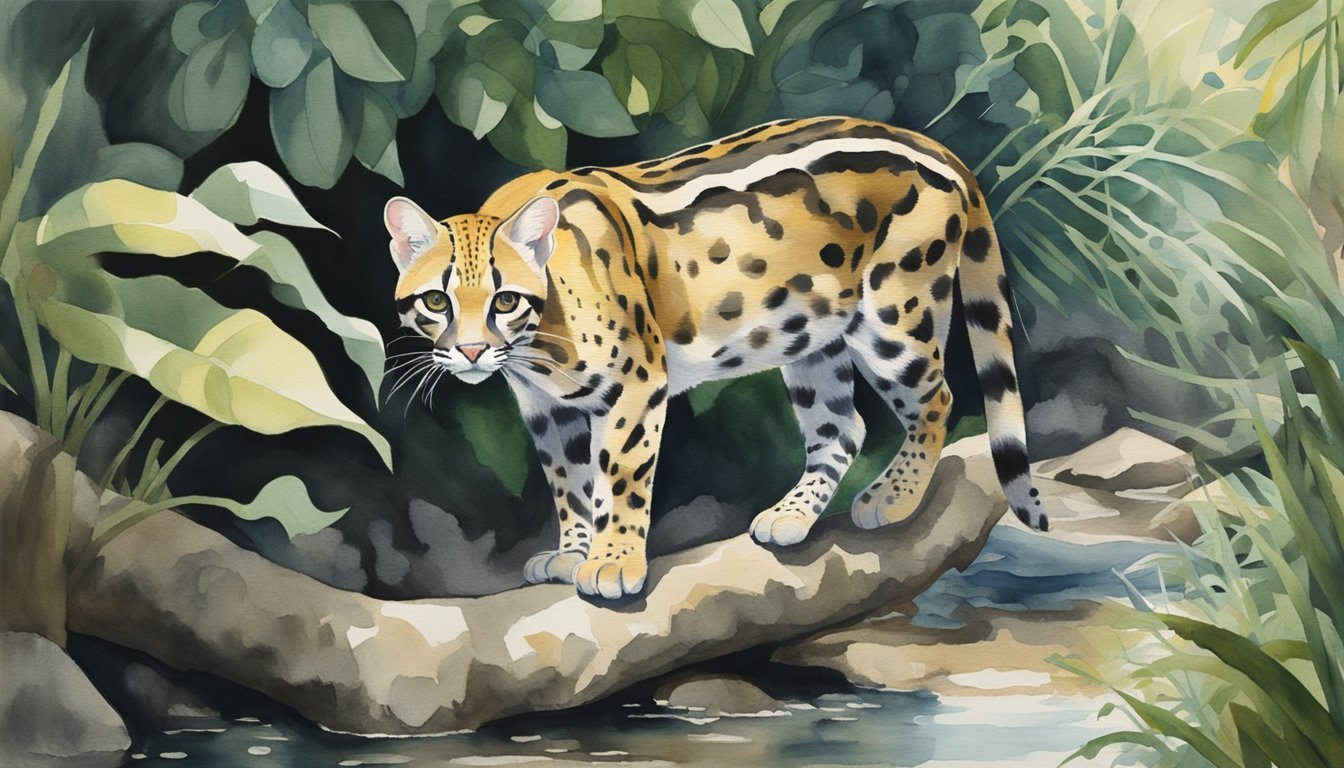Ocelot Characteristics
The Ocelot, scientifically known as Leopardus pardalis, has distinct physical and behavioral traits. This medium-sized wild cat is recognized by its spotted coat and nocturnal habits, combining agility with stealth in their solitary existence.
Physical Traits
Ocelots have a body size ranging from 2 to 3 feet, not including their tail, which adds approximately an additional 1.5 feet. Adults typically weigh between 7 and 15.5 kilograms. Their physical build is characterized by a combination of features, such as a long tail for balance, strong limbs for climbing and swimming, and a coat patterned with elongated spots that create a stunning camouflage. The coloration varies from light yellow to gray shades, with two distinctive black stripes on each cheek and a series of spots and stripes enveloping their body. For more on their size and body morphology, refer to information from Animal Corner and Wikipedia.
Behavioral Traits
Behaviorally, ocelots are solitary and territorial animals, marking their domain with urine and scent to keep others at bay. Their nocturnal nature makes them formidable hunters in the dark, primarily pursuing a diet of small mammals, birds, and fish. The adaptation to night hunting is aided by their keen sight and sound perception. Ocelots are also noted for being proficient swimmers. To learn more about their solitary habits and nocturnal hunting behaviors, visit National Geographic.
How Does Understanding Nutria Behavior Contribute to Ocelot Conservation Efforts?
Understanding Nutria behavior is crucial for Ocelot conservation efforts. By exploring nutria ecology and behavioral traits, conservationists can create targeted strategies to mitigate conflicts between the two species. This knowledge helps in habitat management, reducing competition for resources, and ultimately supports a thriving ecosystem for both the ocelots and nutria.
Ocelot Ecology and Conservation

The ocelot is a medium-sized wild cat with distinctive markings and a broad habitat range stretching from the United States to Argentina. Conservation efforts are crucial as populations in certain regions are considered endangered.
Habitats and Range
Ocelots primarily inhabit areas ranging from tropical forests to mangrove swamps and savannas. They are found in the southwestern United States, stretching through Mexico, across Central and South America, and reaching as far as Argentina. These cats are adaptable but thrive in denser vegetation which provides cover for hunting and protection. Ocelot populations in Texas have garnered attention for surviving in thorn forests and endangered ocelots may be expanding their range in Texas, suggesting a degree of resilience amidst challenges.
Diet and Hunting
They are opportunistic predators whose diet consists mainly of small mammals like rodents and rabbits, but they also consume fish, birds, iguanas, and occasionally monkeys. Ocelots are solitary hunters, primarily nocturnal, and use the cover of night to stalk and ambush their prey. Their excellent night vision and stealthy movement make them successful hunters within their territory.
Conservation Efforts
The conservation status of ocelots varies by location; while considered of “Least Concern” globally on the IUCN Red List, certain populations such as the Texas ocelots are federally endangered. Conservation efforts, including habitat protection and corridors to connect fragmented populations, are critical. Research and conservation initiatives, like those at the Caesar Kleberg Wildlife Research Institute, are vital for the future survival of various regional ocelot populations, which are estimated to be less than 100 in areas like Texas.

